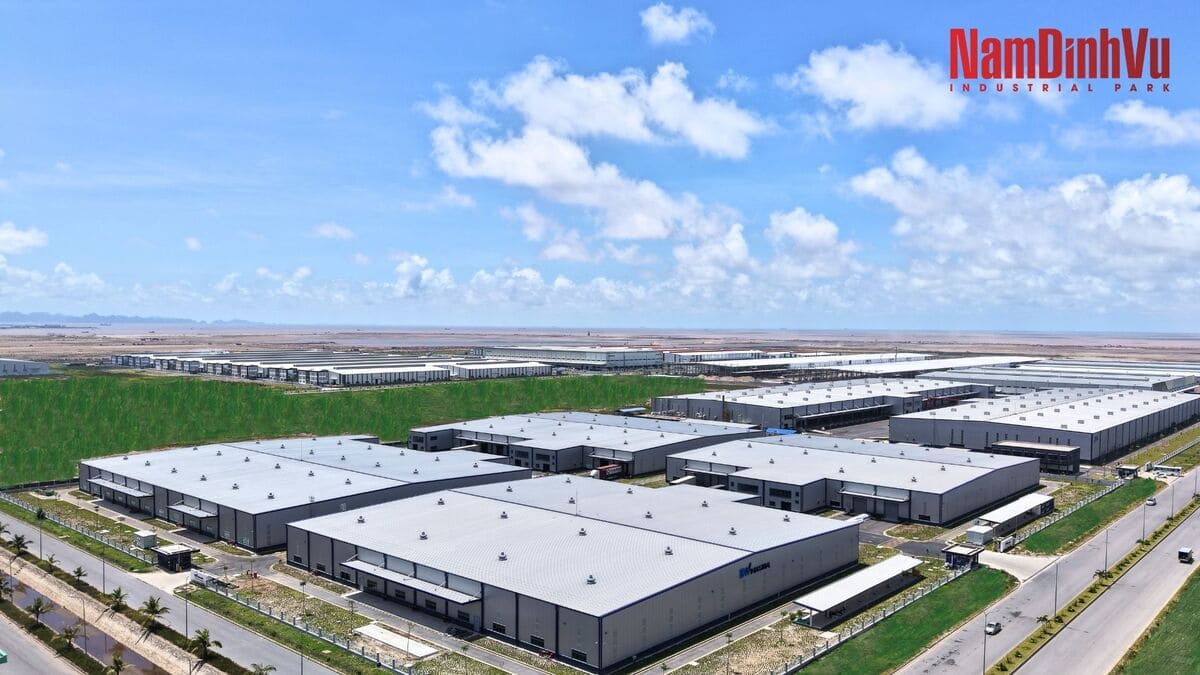Vietnam’s industrial real estate market is entering a new phase of transformation as global businesses reconfigure their supply chains amid rising costs, geopolitical uncertainty, and sustainability pressures. Recent developments reveal both promising opportunities and pressing challenges for long-term growth.
Global Supply Chain Realignment Creates New Opportunities
According to Savills’ Global Occupier Markets Spotlight 2025 report, over 80% of tenants across 54 major industrial markets have postponed leasing decisions due to economic and political risks. In the Asia-Pacific region, about 40% of companies are re-evaluating their investment plans.
Key concerns stem from trade policy shifts, exchange rate volatility, cybersecurity threats, and natural disasters that disrupt logistics. Consequently, firms are seeking flexibility through shorter leases and expansion clauses while diversifying their manufacturing bases to reduce overreliance on single markets.
Thanks to its political stability, central location in Southeast Asia, and strong supply chain integration, Vietnam has emerged as a favored destination for new-generation industrial tenants.
FDI Inflows Reinforce Vietnam’s Industrial Momentum
Savills Vietnam noted that the country is aligning with global trends emphasizing flexibility, efficiency, and sustainability. Data from the National Statistics Office showed the industrial sector expanding by 8.07% in the first half of 2025 – its second-highest growth rate since 2020.
Manufacturing and processing grew by 10.11%, while the index of industrial production (IIP) rose 9.2%, signaling robust recovery and expansion.
Similarly, CBRE Vietnam highlighted that newly registered FDI reached US$21.52 billion, up 32.6% year-on-year, and disbursed capital climbed to US$11.72 billion, the highest in five years. These figures reaffirm investor confidence and Vietnam’s growing industrial momentum.
Pursuing Sustainable and Quality-Based Growth
Despite these positive indicators, Vietnam’s industrial sector faces structural barriers. Supply beyond core industrial zones remains limited in both scale and quality, while uneven logistics infrastructure hampers efficiency.
Moreover, international investors are prioritizing ESG standards and renewable energy integration – areas where Vietnam is still developing. Green industrial parks face high initial investment costs and inconsistent policy incentives, slowing sustainable adoption.
Savills’ Thomas Rooney emphasized that Vietnam must now focus on qualitative rather than quantitative growth. Integrating ESG principles into industrial development, accelerating reforms, and investing in interregional connectivity will be essential to maintain competitiveness.
Building a Resilient Future for Industrial Growth
As the global industrial landscape evolves, Vietnam’s challenge lies in sustaining its appeal through innovation and sustainability. Developers are encouraged to adopt flexible ready-built factory models, energy-saving solutions, and tenant-friendly terms.

At the same time, collaboration between the public and private sectors will play an important role in maintaining growth momentum. Continued investment in education, workforce training, and technology transfer can further enhance competitiveness. With these combined efforts, Vietnam’s ability to balance growth with environmental responsibility will determine its success in becoming a resilient and sustainable hub in global supply chains.
In conclusion, Vietnam’s industrial real estate market stands at a pivotal moment. By embracing innovation, sustainability, and collaborative growth, the country is well-positioned to strengthen its role as a key manufacturing and logistics hub in Asia’s evolving supply chain network.
Source: VOV
